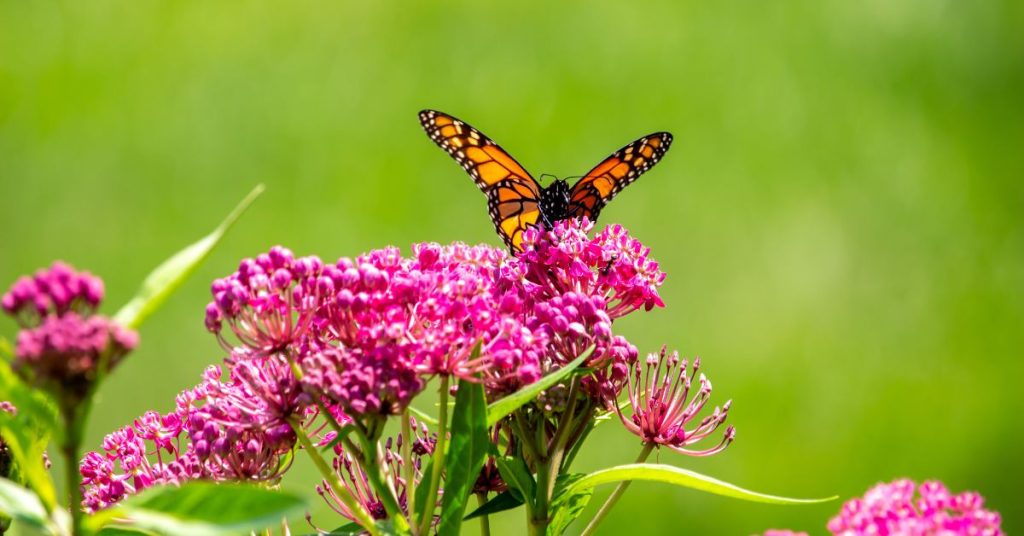

Monarch butterflies have long captured the hearts of millions. Their delicate orange-and-black wings, extraordinary migration spanning thousands of miles from Canada to Mexico, and symbolic connection to transformation make them one of nature’s most beloved creatures. Monarchs are more than just insects: they’re a miracle of evolution and a source of wonder.
But beneath their beauty and grace lies a troubling truth. Monarch butterflies are among the species most threatened by modern agricultural practices, and one chemical stands out as a major culprit—glyphosate.
Glyphosate is the active ingredient in many herbicides, most notably Roundup. It is used extensively in industrial agriculture to control weeds. The problem is that it doesn’t discriminate; it eliminates nearly all vegetation it touches, including milkweed, the sole plant that monarch caterpillars rely on for survival.
Over the last two decades, milkweed has been decimated across the American Midwest, the monarch’s critical breeding grounds, largely due to the widespread adoption of crops genetically modified to allow for increased applications of glyphosate. As milkweed disappears from the landscape, monarch populations plummet. Once numbering in the hundreds of millions, the eastern monarch population has declined by more than 80 percent since the 1990s, while the total number of butterflies of all species in America decreased by 22 percent from 2000 to 2020.
Without milkweed, monarchs have nowhere to lay their eggs. Without caterpillars, there are no butterflies. It’s a sobering and direct chain of cause and effect.
To lose the monarch would not just be an ecological tragedy—it would be a cultural and spiritual loss. Monarchs have long inspired artists, scientists, poets, and schoolchildren. Their migration is one of the most remarkable phenomena in the natural world. Requiring no GPS or roadmap, monarchs that have never made the journey before find their way each fall to the exact same forest groves in central Mexico, guided only by instinct and celestial cues.
Their beauty, resilience, and grace are reminders of nature’s brilliance.
Saving the monarchs requires rethinking how we grow our food and manage our landscapes. We can support organic and regenerative agriculture, plant native milkweed and nectar flowers, and advocate for pesticide reform. Awareness is the first step—but action must follow.
The plight of the monarch butterfly mirrors our own struggles with industrial systems that value short-term gain over long-term balance. Their fragile wings carry a heavy message. When we harm the natural world, we ultimately harm ourselves.
Will we listen?
Copyright 2025 Center for Nutrition Studies. All rights reserved.